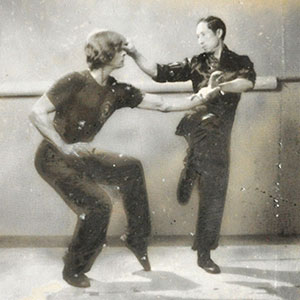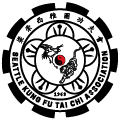The Hung Gar Style
Historically, Southern China has been dominated by five Kung Fu styles: Hung, Lau, Choy, Lay, and Mok. Hung Gar is most widespread and popular of these. Gar means clan or family in Cantonese, whereas Hung refers to the family name of the man who invented the system, Hung Hei-kwun, a Fukien tea merchant. According to legend, Abbot Chi Zin, a monk of the Fukien Shaolin Temple, taught Hung the Shaolin Tiger Style. Hung being a curious man, always sought to improve his skills. He added to his Tiger Style elements from his wife's White Crane system, movements from the Dragon, Snake, and Leopard forms, and techniques from the Five Elements Fist. He modified and expanded his Tiger Style to develop a system better balanced in long- and short-range applications; a system which better reflected his own character and skills: Hung Gar. Hung Hei-kwun developed a reputation for being a fighter of great skill and was known as "The Southern Fist".
The essence of Hung Gar can be found in its name. "Hung" also means to "stand tall with integrity." Hung Gar tenents stress honesty, directness, iron will-power, and righteousness.
Techniques
Southern China is a wet land of great rivers and agriculture. Trade and transportation centered around its rivers. Its population is greater than that of Northern China and its cities more crowded. Hung Gar is well adapted to close quarter fighting in small, crowded alleyways or in wet, slippery rice fields. Hung Gar training emphasizes strong stances, iron-hard blocks, low snapping kicks, ambidexterity, deceptive hand techniques and power, all geared for close-range techniques. The low, strong stances conform well to encounters on barges and rafts. Low snapping kicks are well suited to wet and slippery ground.
Hung Gar hand techniques stress ambidexterity and simultaneously blocking and striking. The blocking maneuvers of Hung Gar were well-known and feared. Opponents often thought twice before challenging a Hung Gar practitioner, for if a block could numb an attacker's limb, how much more painful must a strike be?
Training
The training is grueling and highly demanding and fits well the student who is physically strong and compact, of muscular build and who possesses great endurance. Legends depict Hung Gar students who stood in horse stance the length of time an incense stick burned down completely, anywhere from one to three hours.
At the Seattle Kung Fu Club, the Hung Gar curriculum includes empty-hand, weapon, and sparring sets. The sets include traditional Hung Gar forms. Each form builds on the basic skills of Kung Fu but each emphasizes a different ability. There are seventeen weapon sets, covering the four basic weapons — staff, broadsword, spear and straight sword — as well as more exotic weapons, including the long pole, hoe, double butterfly knives, chain whip, and trident. The sparring sets complete the Hung Gar curriculum. These sets include hand and weapon sets, such as the Tiger and Crane Sparring Set, sword versus spear, and spear versus butterfly knives.
Background
The term "kung fu" has been applied to the Chinese Martial Arts for centuries, and means "hard work", a fitting description of the rigors involved in the learning and practice of the Chinese Martial Arts! A student of kung-fu is expected to practice the art diligently and faithfully, enduring many tiring and sometimes painful hours of training. This, combined with the higher moral character and mental discipline expected of the student, give the student a highly rigorous and demanding path to follow. No wonder the term "kung fu" was chosen! Other terms exist for the Chinese Martial Arts, among them "ch'uan shu" (fist art), "wu shu" (martial art), and "kuo shu" (national art), yet none of these names has received as widespread use and popularity as "kung fu."
Kung fu is not only a form of healthy exercise and effective system of self-defense, but also benefits the practitioner's mental and spiritual well-being. A person's body cannot act without the mind, and the mind must be directed by a calm spirit. The practice of true kung fu requires that the teachings become integral to the way of life of the practitioner, influencing every aspect of life. Kung fu blends mind, spirit, and body together, enabling the harmonious action between the elements of a person's life.
Philosophy
Chinese philosophy consistently stresses the importance of harmony within the natural order, as is perhaps best symbolized by the ancient Chinese symbol of yin and yang. Neither side of the symbol is larger or more important to the other both sides must be in perfect balance, or the whole is affected. This is the same with the practitioner of kung-fu. The true mastery of kung-fu may only be achieved when all elements of a person's life are in balance.
The harmony that must exist within an individual practitioner of kung-fu is also extended to harmony within the kung fu school, and within society. Within the school, students are taught respect for each other, their instructors, and for the society in which they live. All students lend a hand in the care of each other and of the school itself. In this way, a kung fu school acts as a family. In fact, in the Chinese tradition, members of the school are referred to as "brother" and "sister". The master in this sense is the "father" of the school, and thus receives much more respect than an ordinary teacher.
Leadership
The master of a kung fu school is known to the students as "Sifu." The Sifu is a highly learned and versatile person who has knowledge not only of self-defense, but may possess knowledge in many other areas as well, such as medicine, philosophy, or Chinese culture and literature. Not only a teacher of martial arts, the Sifu is also responsible for providing guidance and acting as a prime example to students. A common saying in kung fu is that the student "starts in a dark room while the master stands in the sunlight." The saying exhibits how important the Sifu is in developing not only the student's kung fu skills, but also attitude and philosophy as well.
For information call:
(206) 624-3838
656½ South King Street
Seattle, WA 98104
Directions »
It is man that makes truth great,
not truth that makes man great.
—Confucius
© Seattle Kung Fu Club


